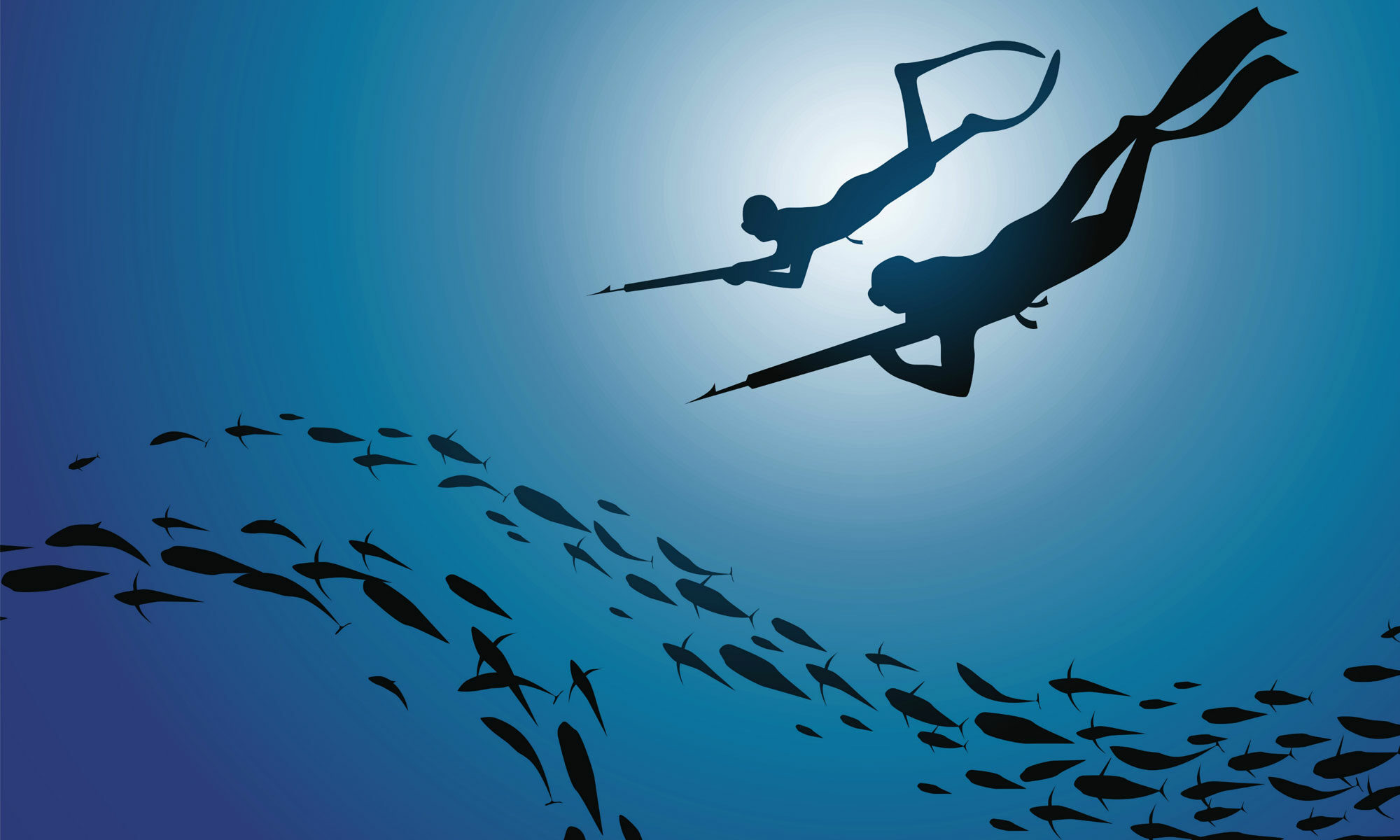Hello ladies and gents this is the Viking telling you that today we are talking about
FASCINATING FACTS ABOUT THE HISTORY OF SPEARFISHING
Posted by Tom Peters | | Uncategorized
Fascinating Facts About the History of Spearfishing
Diving and spearfishing may be a recent occurrence but, spearfishing has been done since before written history.
Here we take an interesting look at the history of this ancient practice and how it made it to the current day.
Whether you spell it spear fishing or spearfishing, this means of survival turned extreme sport has a long and varied history. Let’s look at 10 of the most fascinating facts in the history of spearfishing.
1. SPEARFISHING IN THE BIBLE
A fishing spear and the act of using it is described in the book of Job in the Holy Bible.
In Job 41, there is a long description of the leviathan being faced. Historians believe that the creature being described was a crocodile. The verse 41:7 reads:
“Can you fill his hide with harpoons or his head with fishing spears?”
The entire verse goes into different ways that the leviathan may be taken down, or fail to be. Since crocodiles were fierce foes it was near impossible to take one down. The strong ones could roll a boat and sink it.
2. USING SPEARS TO FISH SINCE THE STONE AGE
If you’re wondering how to spearfish you could always check out some cave paintings. Cave paintings in France, that are believed to be over 16,000 years old, depict the images of harpooned seals. The Stone Age is when tools became more advanced from the simple tools of their predecessors.
These paintings prove that spears have been used for hunting sea life since before the time of written histories.
The Cosquer Cave can be visited today in Marseille, France. It was discovered in 1985 by a diver names Henri Cosquer. Interestingly, the paintings were not made public until 6 years later.
You will need SCUBA equipment to visit the cave, which sits about 115 feet below sea level. Once inside the cave you rise back up and find yourself in a cavern whose walls were protected from the water.
This is the only known cave that exists under the current sea level with ancient wall paintings still intact.
The discovery of the cave cleared up a mystery that had been haunting historians. There was a puzzling disappearance of ancient caves as you made your way to the Mediterranean Coast. It had been assumed that the ocean had washed away any evidence that may have been available.
There are multiple, large underwater caves near Cosquer that historians believe were also lived in and painted on. Centuries of saltwater, however, have washed the walls cleans and swept away any evidence of human inhabitants that may have once remained there.
There are 177 animals depicted in the Cosquer Cave including deer, horses, cats, and others in addition to the harpooned seals. In all, 11 species are represented in the cave paintings. There is even a human holding the head of a seal, further proving they used these animals for their meat.
In addition to the animals, there are multiple hand stencils and over 200 geometric shapes and figures depicted throughout the cave. There are also 20 mysterious figures that cannot be identified.
3. EVERY CULTURE THROUGHOUT HISTORY HAS FISHED WITH SPEARS
You can get spearfishing tips from any culture in the entire world. Every different region and culture uses some form of this ancient hunting method.
From the ancient cave paintings to ancient Greek treatises, moving into modern literature and art, and on into current day with the inclusion of freediving and SCUBA, spearfishing is here to stay.
Depending on where you end up, the tools look different, and the technique may be varied but, at the end of the day, they will all land you with a fish on a stick at the end of it all.
4. A WHALE OF A TALE
Perhaps the most famous recount of a spearfishing expedition is Melville’s novel, Moby Dick.
Released in 1851, it follows the quest of Ahab to hunt the great white whale, Moby Dick. The quest becomes a mad obsession for Ahab and ends with the madness taking them both down along with his ship.
The iconic novel explores class and social distinctions, the presence of good and evil, and questions the existence of God, throughout its tumultuous high seas escapade.
5. A TREATISE WRITTEN FOR FISHING
The ancient Greeks are known for their elaborate histories and fanciful questing tales. Spearfishing was a topic also on their minds. Polybius, a Greek historian who lived between 200-120 BCE, wrote about techniques using spears to hunt for swordfish.
Later, Oppian of Corycus, wrote an actual treatise concerning spearfishing. The Halieulica or Halieutika, composed between 177 and 180 C.E, is the earliest surviving work of its kind.
It describes a variety of different fishing methods using tridents and spears.
And as always have a chilled day from the Viking

Comments
Post a Comment